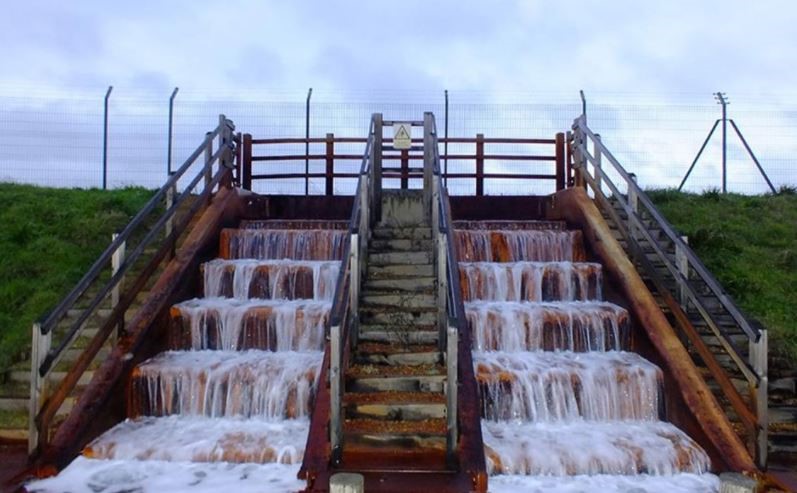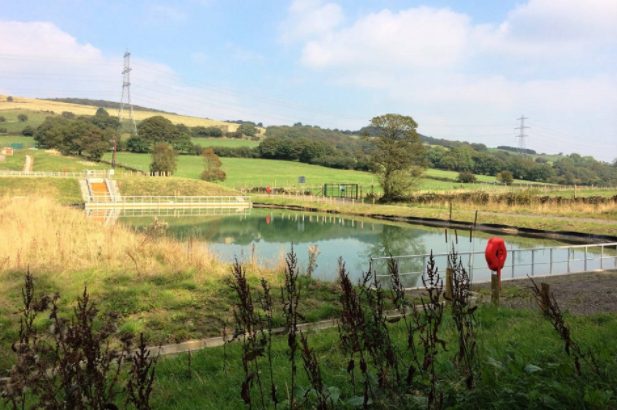How a typical mine water treatment scheme works

To treat mine water, it’s typically pumped to the top of cascade structure, flows down a series of steps, which when mixes with the air it encourages dissolved iron to become solid. The water then flows through a series of reed beds and lagoons, where the iron accumulates at the bottom, known as ochre.
To maintain the performance of a scheme, this ochre is periodically transferred to sludge-drying beds.

The image above shows a scheme which addresses a long-standing coal mine water pollution problem associated to a Sheephouse Wood adit, in South Yorkshire.
The Coal Authority stepped in to construct the scheme to treat the mine water and control water levels and pressure, in order to prevent significant outbreaks of pollution which had occurred at this site in the past.
The scheme comprises of two lagoons and a reed bed to remove iron from the water prior to it being discharged into the local watercourse. This scheme has significantly improved the water over a 2.4km stretch.